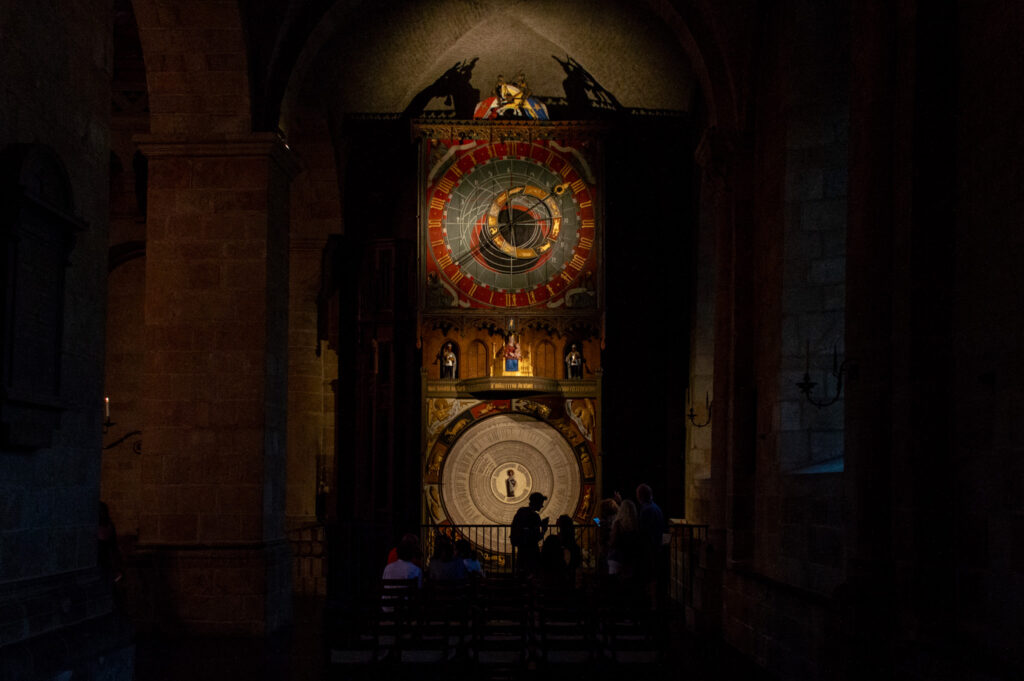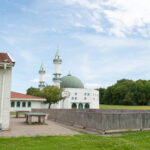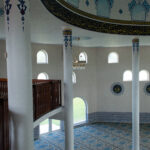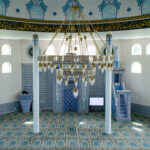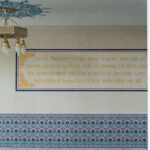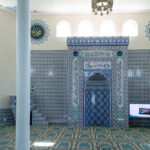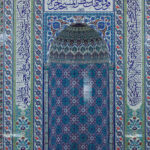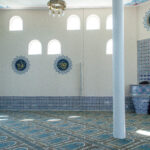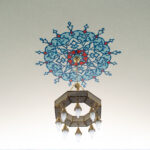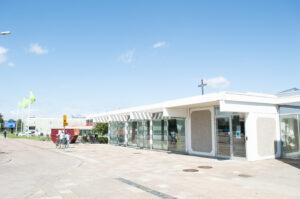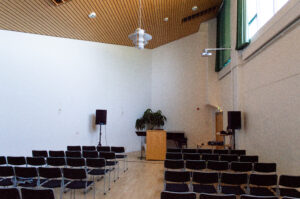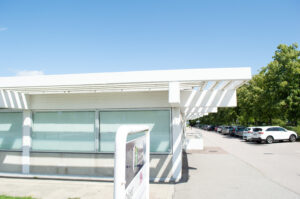Malmo
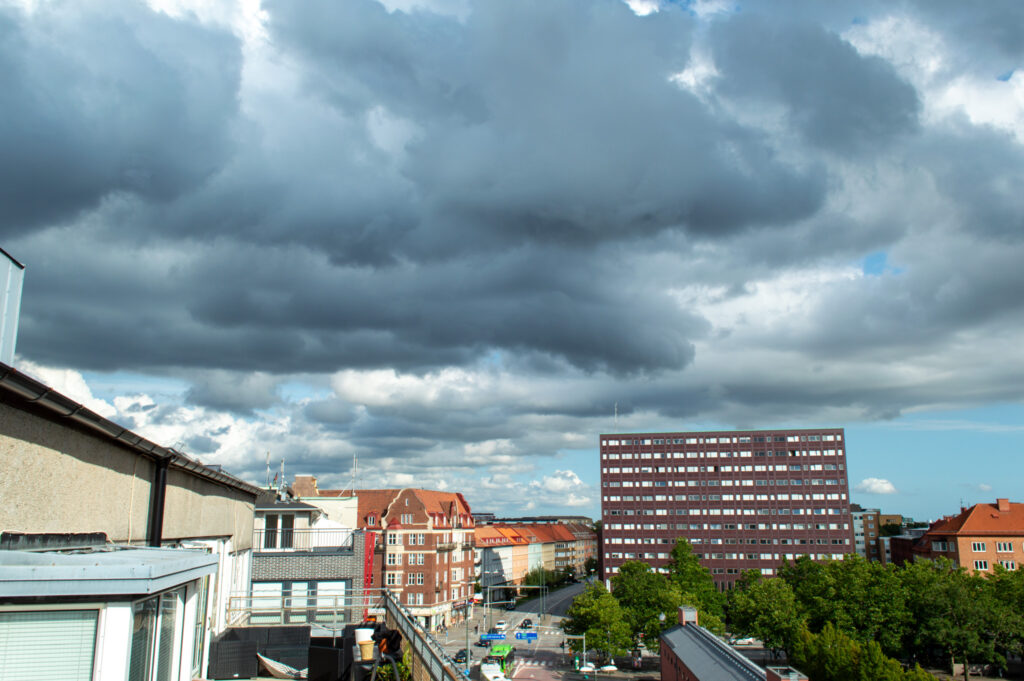
Copenhagen–a city rich in architectural history known worldwide as a mecca for artists and designers. Hundreds of visitors get off at the city’s central station every minute, flocking to the dozens of cultural attractions found on every street. I also get off, but I cross the platform then hop onto another train that will take me over the bridge into Sweden. I make it to Malmo in around a half hour, about as long as it takes me BART from my apartment to the Mission. There is a Burger King on the ground floor of the place I am staying, so I eat at a sad grey sandwich (1) and go to sleep. The next day I exchange my leftover euros for 550 Swedish Kroner, the price for a guided tour of the Malmo Islamic Center. I can’t register for the city’s bus app since I have a foreign number, so I walk twenty minutes to the train station to print a physical bus ticket alongside the other foreigners, luddites, and septuagenarians. I head to Rosengard, a neighborhood that wouldn’t be out of place on the periphery of an American city with its wide streets and brick apartment complexes with ample parking. A quick Google search will however show that the neighborhood has a stigma, laughable by American crime standards, but enough to make a suburban Swede bite their nails. I am here visiting the Malmo Islamic Center, which sits on a large plot of land just off the freeway. The center is comprised of offices, recreation space, and the central masjid which lies just beyond a courtyard. I meet up with a woman named Jonida who is there with her two small children.
All four of us remove our shoes and enter the masjid. A television is set up at the front with a PowerPoint written in English. Jonida begins going through the PowerPoint while her two children play behind us. Malmo’s Islamic Center was founded forty years ago by immigrants from Balkan countries, mainly Macedonia. A Danish architect (whose name I jotted down phonetically and have not been able to find–Something Jorgensen?) designed the center. It was the first mosque in Malmo and is currently the largest in Scandinavia. The prayer space lies beneath a large cupola decorated with gold calligraphy, and the walls are dotted by syncopating windows. Decorated tiles were brought over from Turkey and line the mihrab in shining blue and white swirls.
The Islamic Center as an entity, Jonida explains, is tasked with managing the masjid and other programs that happen on the grounds. There are internal and external activities which happen here, with a lot of interreligious events held yearly. One particularly interesting event is described as “The Tent of Abraham” where local fifth graders learn about Muslim, Christian, and Jewish traditions by visiting various spaces of worship. Sweden is famously a very secular country, so an event like this where kids can come together and learn from each other is very interesting.
The MIC also has a school on the premises which follows Swedish curriculum (2) with supplementary Islamic classes. They also provides services to couples looking to get married/divorced, family counseling, funeral services, and a department of women that recently had an exhibition at a mall in Malmo’s triangle district shopping center. The current-day Malmo Islamic Center was rebuilt in 2005 after a fire in 2003 consumed everything except the cupola. I ask if it might’ve been a hate crime, to which Jonida mentions that nobody knows. She does say that there have been threats and harassment since the MIC’s inception though.
Jonida stresses that the MIC makes an effort to serve Malmo’s Muslim community and also the people of the city more broadly. Rather than waiting for people to come to them, they have taken the initiative and established themselves as an important part of the city’s religious community. At first, people in the largely secular Swedish city thought that having a mosque in their city was weird, but due to efforts by the Muslim community, most people today see the MIC as normal. It helps that Malmo is Sweden’s most diverse city, the entry point for most people immigrating to the country. Walking the streets, you notice how integrated everything feels when compared to other European or even American cities. The vibe in Malmo is that people from all over the world come here and make a concerted effort to get to know one another.
I also have to stress that Jonida hardcore for giving me this tour while taking care of two kids. She is explaining all of these intricate details while her two tiny children continuously experience the whole range of human emotions over five minute intervals. They are happy and laughing, then mad, then sad, then crying, then back to playing. She doesn’t waver for a second, never loosing her train of thought. Her PowerPoint finishes and we go to an office where she hands me some pamphlets before attending to a man who walks in with an envelope.
1: I am surely no believer in American exceptionalism, but the one thing we have perfected as a culture is synthetically processed food doled out in quick succession. Europe lags behind us in the fast-food game, which is perhaps not a bad thing…
2: I later meet a young woman who is a teacher in Sweden who tells me that there is no home-schooling allowed in the country. Everyone, even religious schools, must follow the same core curriculum.
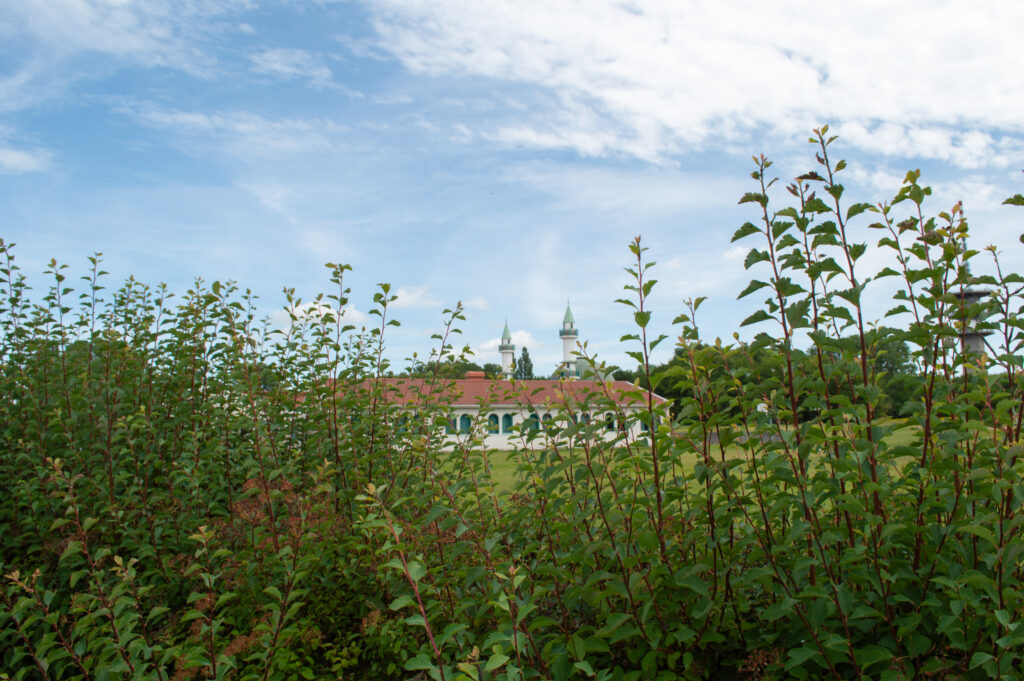
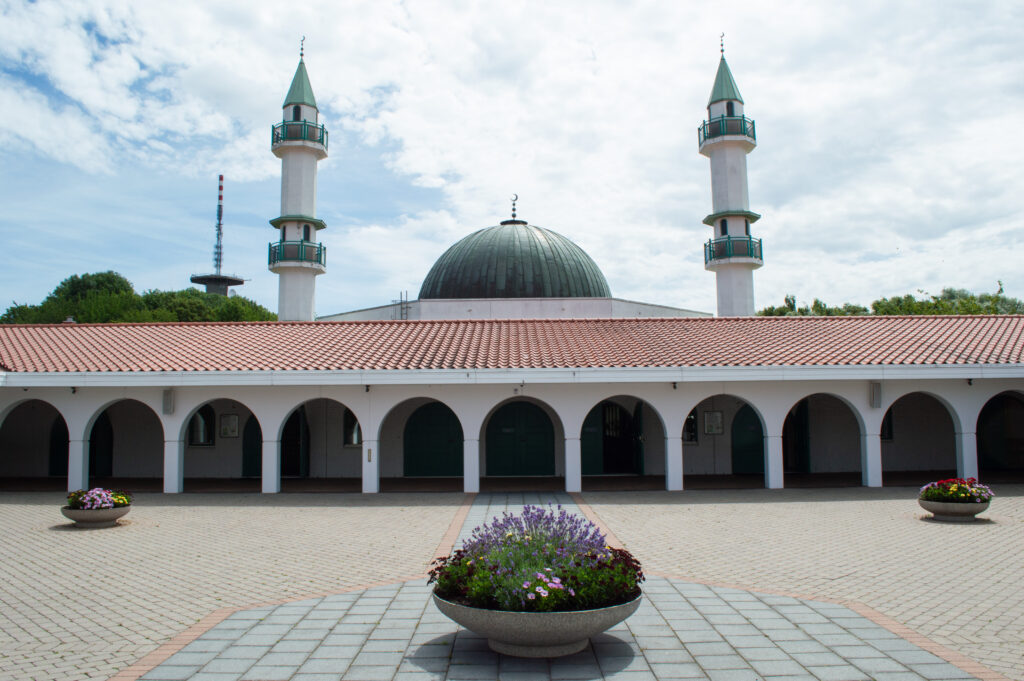
I head back to central Malmo to call Steve, a man who is a friend of my dad’s friend (3). He is a missionary in the same denomination I grew up in, the Evangelical Covenant Church which actually started here in Sweden. We set up a time to meet at the church he is pastor of in a few hours. I take the wrong bus then take the right bus and end up in front of an elderly woman sitting under an umbrella outside the church. Looking for Steve, I walk around the church hoping to find an open door somewhere. No such luck. Back near the tables with umbrellas I spot an open door filled with people. Nobody is under the age of sixty except for me, signaling that this is not a place for me, but I enter anyway. I am intercepted by a woman who quickly explains in American English that Steve had to go help somebody with a flat tire and he’ll be back shortly. He’d told her to look out for a tall guy with curly hair, and I was likely the only person in a 100 meter radius who fit that description (4). So I sit across from the elderly woman outside, smiling and regurgitating the only Swedish words I knew.
The music inside abruptly stops, signaling the beginning of fika. As Swedish mormors and morfars shuffle outside, Barbara, Steve’s wife and the woman who had greeted me, politely lets me know that I’m in one of their chairs. I am afraid of making elderly Swedish enemies, so I move to another table as Steve walks in. We move into the hundred year old church where a large and beautiful mural of a praying Jesus colors the front wall. Steve tells me that a Brazilian church used to operate here but the congregation grew too large for this space and moved. Now it caters to a Swedish congregation made up primarily of older folks.
We sit down for fika and I explain my project. Our denomination is small, so we know a lot of the same names, his friends and colleagues being the parents of my friends and colleagues. I finish my Swedish pastries and Steve tells me he’ll be in contact with me over the next few days. I leave and walk along the beach. The rest of my day is filled with wandering around and eating kebab (5).
3: This project would have been impossible if it weren’t for the many people who connected me and interconnected me along the way. Thank you Fabio for this connection.
4: As in, the only person whose hair still contained melanin.
5: A man who looked like a Nordic John Lennon approached me at the kebab shop and told me the story of the love that brought him to Malmo. It’s a lot to get into in a footnote, but I encouraged him to tell the woman about his feelings. Idk if that was a good idea in hindsight, but at the time I think we mutually thought that some spiritual link had brought us together, and who knows, maybe it did. Or maybe we were hungry at the same time and this kebab shop was the closest place that was open.
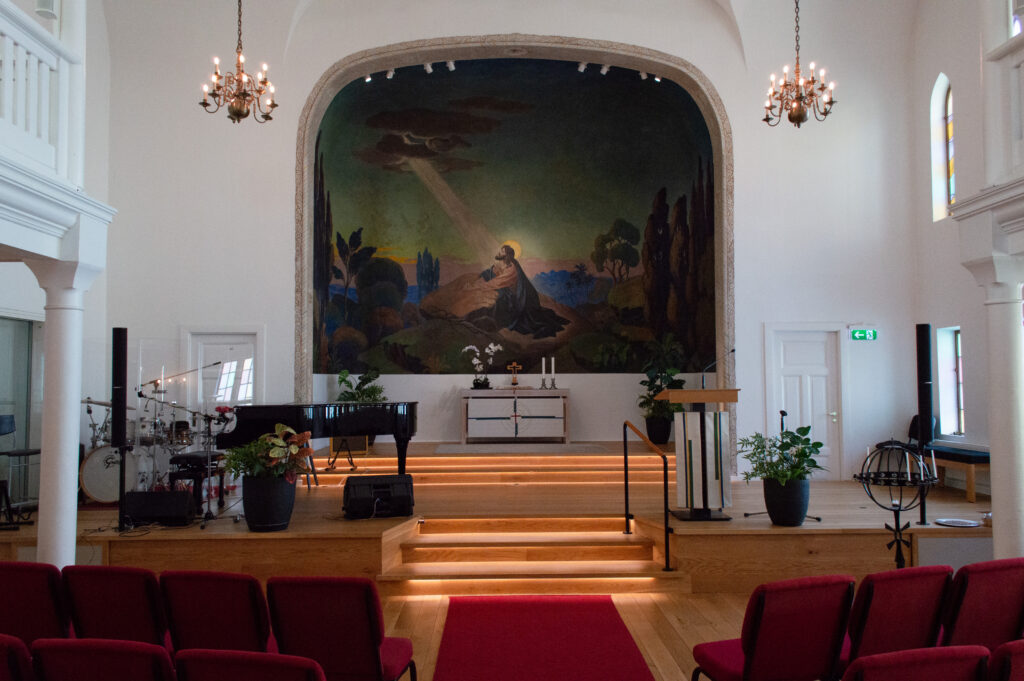
I have dinner with Steve, his wife Barbara, and a young woman who had housed my sister (6) when she was visiting Sweden. Steve invites me to meet with a friend of his for an Egyptian Orthodox service the following morning, so I meet him at a bus stop the next day and we walk over. The service is taking place at a historically Lutheran Church complete with a mural of blonde angels flying high above a Middle-Eastern-looking city. The priest is there dressed in a black cassock setting up for the service. He has a long beard and a big smile, going back and forth between Swedish and English while talking to Steve and me. An image of Jesus surrounded by Arabic writing is projected on the wall to the left of the blonde angels.
Steve and I sit down as the prayer service begins. People trickle in slowly until most of the pews are full with people of various Orthodox backgrounds. Males between the ages of five and fifty-five walk up to the front, say a prayer, change into a white robe, and join the ceremony. The prayers are spoken in Coptic, Arabic, English, and Swedish while the priest swings incense around the room. Percussion instruments are also played while the prayers are chanted. At some point, one of the men comes to us and tells us about an Orthodox app we can download that will take us through the prayers in English. Steve and I try to follow along, but I think we’re both more interested in just sitting and absorbing the prayers. It strikes me that this form of worship is probably the oldest Christian worship still practiced, originating in the pre-Schism days. Fathers have taught their sons these traditions for literal centuries, and now, in this old Swedish church, the tradition continues.
At a certain point, some of the smaller kids begin to get restless, bracing themselves for some unknown foe. I sit confused until I see the priest holding what looks like a saucer filled with water smiling at the kids and parents alike. Then he starts lobbing water at the congregation, almost laughing as he splashes the children on either side of Steve and me, eventually landing some holy water right across my glasses. I don’t know if it would be sacrilegious to wipe it off, so I wait for it to evaporate.
The prayer service ends and we head downstairs for fika. We meet some of the guys who participated in the service. Everyone is very friendly and excited to talk about Christianity’s roots in Egypt/Syria/Armenia/Iraq. Two older men start sharing photos of themselves in their youth, trying to see who was more handsome. No consensus is reached, with the younger men clowning on them for getting into this debate in the first place. Steve and I say our goodbyes to the men, the priest, some of the friendly ladies, and head back upstairs. We part at the bus station.
(6) ECC to North Park University to Sweden pipeline–if you know, you know.
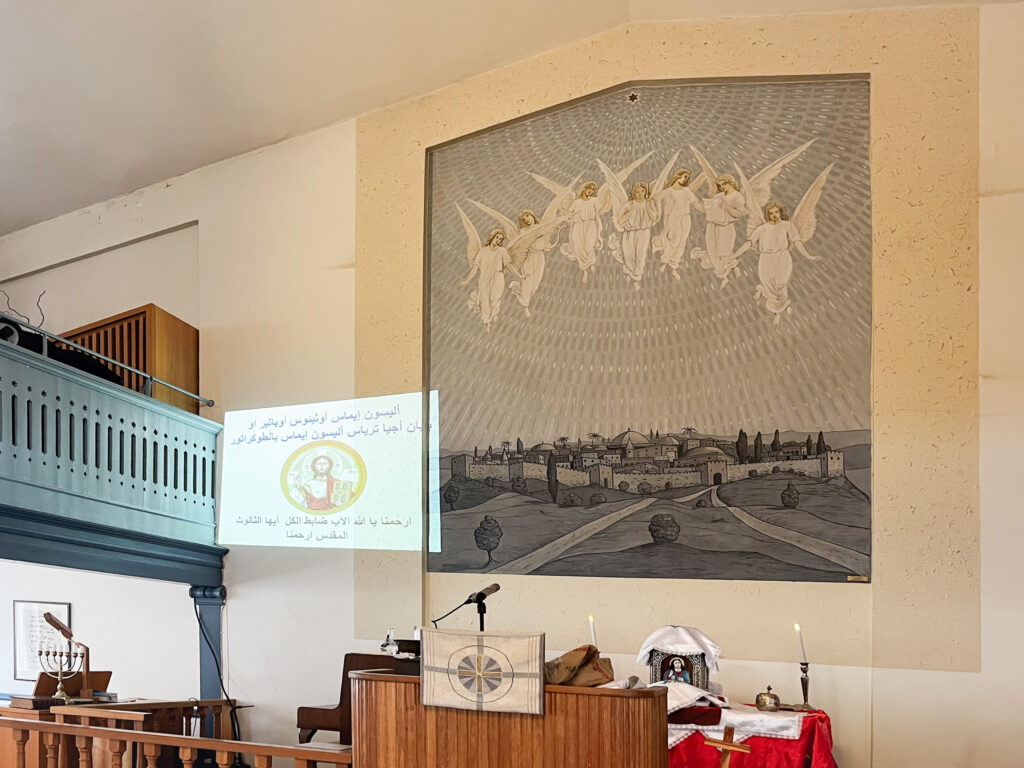
The following day I head to a former convention center Steve had suggested I check out that houses a number of different congregations. I walk in and ask a woman in a green dress if the English speaking congregation is meeting today. She has no idea and asks a guy to go check. He disappears behind a door that leads to a hallway and comes back with a thumbs up. I explain my research to the woman in green and she gives me an email for the lead pastor who is currently on vacation. I then go through a hallway that leads into a room with high ceilings. English worship music is playing over the speakers from a computer, and a couple dozen people of various national backgrounds stand singing. I sneak in the back self-consciously. The pastor gives a sermon in a British accent, and I wait until everything is done to approach him.
He tells me that the English speaking congregation has existed as a part of this church for around thirty-five years. They are a Pentecostal congregation which the pastor admits sometimes throws visitors off when they get charismatic. There was no speaking in tongues when I was there, so I take him at his word. He explains that the congregation is made up of mainly international people who feel more comfortable speaking English. On that day alone there are people from West Africa, East Asia, South Asia, Europe, and, with me, America among the maybe twenty people gathered. Back in the 1980s, the original Assemblies of God church which the current church was sprouted from met in a building downtown. At some point, the Swedish government wanted this building and the church sold it, relocating to its current location. The current building has spaces for a variety of churches each worshiping in their own languages. Most are on summer break, enjoying that much envied government mandated vacation we in the United States quiver at the thought of. The English service itself was just about to go on summer break, so I’d visited just in time.
The church building is large and perfect for various professional groups to hold workshops within, so rooms are rented out during the week. The congregation consists mostly of students, the main group attracted by this English service since its inception in the 1980s. Most students are on summer break during my visit, but I am told that a typical Sunday has around forty to forty-five people in attendance. About a third of the congregation attends temporarily, while they finish their studies or use up work visas. The rest are a collection of English speakers from countries the British poked their nose into at some point or another. Pastor BLANK, who is Swedish despite his British accent, tells me that like everywhere, the church closed during Covid. He stresses however that church is meant to be “done” together. There is of course an obligatory fika at the back of the room where I shake a dozen or so hands and smile at a dozen or so people. Everybody is very nice, telling me a number of places I could visit if I had more time. I head outdoors and take some more photos. The street poles outside have banners advertising a deal on cheeseburgers, but I have learned by this point to not trust fast food in a region that regulates what chemicals can be consumed by humans. I make my way to the bus, staring at cheeseburger ads hanging on streetlights with distrust.
Epilogue: I went to one of the oldest churches in the Skane region on Sunday afternoon, the Lund Cathedral. I arrived for the English service which is supposedly very international. Due to some miscommunication, I ended up reading some scripture in this Viking-era church. A woman with a braid almost as long as her skirt waved me to the pulpit when I was supposed to read, so I walked up and recited the verse on the paper handed to me by the priest. I thought I did a good job until the next guy follows a very specific liturgical form when reading which I did not know about. Live and learn. I also took communion out of politeness, realizing after the fact that this was almost certainly a sacrilegious act since I’m not baptized in the Church of Sweden. I rationalize that the church I was baptized in as a little Mexican kid, the Evangelical Covenant Church–Iglesia Evangelica del Pacto–is a descendant of this church though, so it’s probably okay. There is mention of fika, and I am by this point very thirsty, but the priest disappeared along with the long-skirted woman and I never see them ever again.
